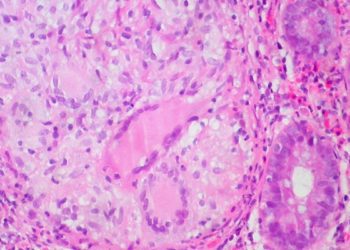Healthy prenatal dietary patterns may be protective against offspring autism
1. The data from two cohort studies show that the chances of receiving an autism diagnosis was decreased in mothers who had a higher adherence to a healthy prenatal dietary pattern (HPDP) compared to mothers who had low adherence to a HPDP.
Evidence Rating Level: 1 (Excellent)
Autism spectrum disorder includes a spectrum of characteristics related to neurodevelopmental conditions such as lack of eye contact and differences responding in social situations. Previous studies have mainly focused on specific nutrient intake (such as folic acid) and their relationship to autism diagnosis, therefore leaving a gap in the literature regarding the relationship between an overall healthy prenatal diet and autism diagnosis. The MoBa used the 40-item Social Communication Questionnaire (SCQ) to assess autism-associated behaviour and communication difficulties, while the ALSPAC used the 12-item Social and Communication Disorders Checklist (SCDC). Adherence to a healthy prenatal dietary pattern (HPDP) was split into low, medium, and high adherence with healthy foods being the ones that are encouraged during pregnancy in respect to dietary guidelines worldwide (such as fruits, vegetables, whole grains, and nuts). To acquire further evidence on the association between adherence of a healthy prenatal diet with autism diagnosis and related traits, the Norwegian Mother, Father and Child Cohort Study (MoBa) and the Avon Longitudinal Study of Parents and Children (ALSPAC) were created. Since two studies were created, they each included different numbers of participants with different data. In total there were 84548 pregnancies (mean [SD] age, 30.2 [4.6] years) in MoBa while there were only 11760 pregnancies (mean [SD] age, 27.9 [4.7] years) in ALSPAC. After the models were adjusted, mothers with a higher adherence to a healthy diet was associated with a decreased odds of the offspring receiving a diagnosis of autism, compared with mothers with a low adherence (OR, 0.78; 95% CI, 0.66-0.92). Similarly, high adherence was also associated with a decreased odds of the offspring having difficulties communicating at 3 years old according to MoBa (OR, 0.76, 95% CI, 0.70-0.82) and 8 years old according to ALSPAC (OR, 0.74; 95% CI, 0.55-0.98). Both the MoBa and the ALSPAC found that the mothers who had a higher adherence to a HPDP had a 22% decreased odds of their child receiving an autism diagnosis.
Click to read the study in JAMA Network Open
Image: PD
©2024 2 Minute Medicine, Inc. All rights reserved. No works may be reproduced without expressed written consent from 2 Minute Medicine, Inc. Inquire about licensing here. No article should be construed as medical advice and is not intended as such by the authors or by 2 Minute Medicine, Inc.






